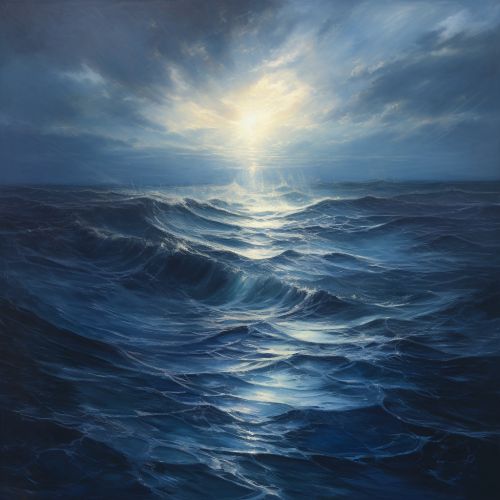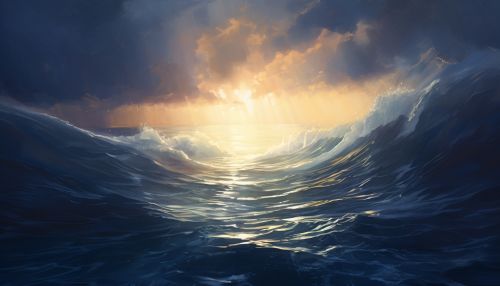Mariana Trench
Introduction
The Mariana Trench is the deepest part of the world's oceans, reaching depths of over 36,000 feet (11,000 meters). Located in the western Pacific Ocean, it is named after the nearby Mariana Islands, which themselves are named after Queen Mariana of Austria. The trench is a crescent-shaped scar in the Earth's crust, and its deepest point is known as the Challenger Deep.


Geography and Geology
The Mariana Trench stretches over 1,550 miles (2,550 kilometers) long and 45 miles (70 kilometers) wide on average. The trench, however, is not the part of the seafloor closest to the center of the Earth. This is because the Earth is not a perfect sphere; its radius is about 25 miles (40 kilometers) less at the poles than at the equator.
The trench is the boundary of two tectonic plates, where the Pacific Plate is forced under the Mariana Plate in a process known as subduction. This process leads to the formation of deep-sea trenches and volcanic arcs, a series of volcanoes often parallel to the trench. The Mariana Trench is also associated with the Mariana Islands, an arc of volcanic islands.
Exploration
The first exploration of the Mariana Trench was conducted in 1875 by the British ship HMS Challenger, which used sounding weights to measure the depth of the trench. The deepest part of the trench, the Challenger Deep, is named after this expedition.
The first manned descent to the bottom of the Mariana Trench was made by the bathyscaphe Trieste in 1960. The vessel was manned by Swiss scientist Jacques Piccard and U.S. Navy Lieutenant Don Walsh. They spent about 20 minutes at the bottom but could not take photographs due to the stirring up of sediment.
In 2012, film director James Cameron made a solo dive to the bottom of the trench in the submersible Deepsea Challenger. He spent about three hours exploring the seafloor and filming with 3D cameras.
Life in the Trench
Despite the extreme conditions, life exists in the Mariana Trench. The organisms that live in the trench have adapted to the high pressures, low temperatures, and lack of light. These include foraminifera, small single-celled organisms with hard shells; amphipods, small crustaceans; and sea cucumbers.
In 2012, during James Cameron's expedition, a new species of sea anemone was discovered. It was named the "Desmostylus", after the ancient Greek word for "chain link", referring to its appearance.
Environmental Concerns
The Mariana Trench, despite its remote location, is not immune to human impact. In 2016, a study found high levels of persistent organic pollutants in the trench's amphipods. These chemicals, which include PCBs and PBDEs, are man-made and were widely used in the mid-20th century.
Moreover, plastic debris has been found in the trench. A plastic bag was found at the bottom of the trench in 2018, highlighting the widespread problem of plastic pollution in the oceans.
